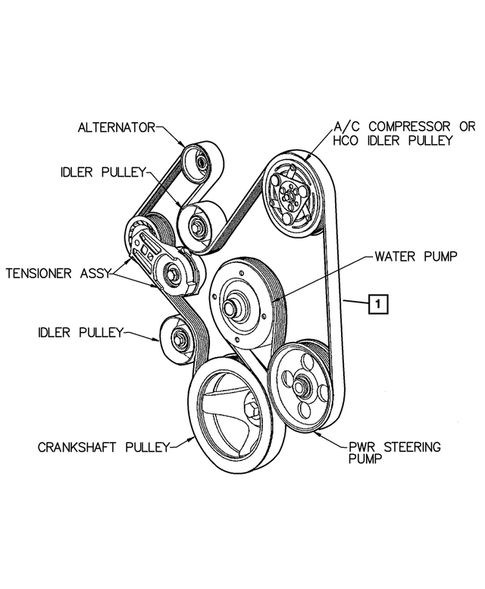The firing order for your 2006 Dodge Durango is 1-8-4-3-6-5-7-2. This means that this is the order in which the engine ignites the spark plugs to run smoothly and powerfully.

When you’re sitting in your Durango and looking forward, the first cylinder is on your left at the front. The rest follow in order from front to back, left to right.
If your engine isn’t working well, it might be because the spark plugs aren’t firing in the right order. If you want to learn more about engine misfires and how to spot them, keep reading.
Quick Navigation
Key Takeaways
- The 2006 Dodge Durango uses a specific sequence for its engine to work properly, and that sequence is 1-8-4-3-6-5-7-2.
- The first cylinder is at the front left part of the engine, and the others follow in a pattern that goes left, then right, and so on.
- If this sequence gets messed up, the engine can start to misfire, which means it might jerk around, use more gas than usual, or have trouble running smoothly.
- It’s really important to catch and fix a misfire early on, to avoid big repair bills, keep the car running efficiently, and make it last longer.
- Misfires can be caused by a few different things, like problems with the spark plugs, issues with the ignition coil, or bad fuel, as well as messing up the engine sequence.
Understanding the Firing Order

To fully understand how your 2006 Dodge Durango’s engine works, imagine it like a music band where each part plays its note at the right time to create a beautiful melody. Your Durango uses a specific pattern: 1-8-4-3-6-5-7-2. This isn’t random; it’s designed to make sure the engine works at its best and shakes as little as possible.
This pattern is like the rhythm or heartbeat of your vehicle. Each number stands for a part in your engine, and the pattern tells you the order in which they start. When this pattern is followed correctly, your engine works smoothly, guaranteeing you get the top-notch performance you’re used to from your Durango.
Identifying Cylinder One
In your 2006 Dodge Durango, the first cylinder is found on the front left of the engine. It’s important to know where this cylinder is because it can help you figure out problems if your engine isn’t running smoothly.
Here’s a simple guide to help you understand where each cylinder is located:
- Cylinder 1: Front-Left
- Cylinder 2: Front-Right
- Cylinder 3: Second in line on the left
- Cylinder 4: Second in line on the right
- Cylinder 5: Third in line on the left
Knowing where each cylinder is in your engine can help you solve problems more quickly. If your engine isn’t running properly, you can check each cylinder to see if it’s working correctly. Every cylinder is important for your engine to work properly, so knowing where they’re can help keep your Durango running smoothly.
Symptoms of Engine Misfire
Knowing when your 2006 Dodge Durango’s engine is misfiring can help you avoid expensive repairs and keep your car running smoothly.
If your car’s power keeps changing, and you feel a jerking motion while driving, it might be a sign of engine misfire.
If your car is using more fuel than usual, this could also be a sign.
Also, if you hear strange noises when you start your car or when it’s idling, this could mean there’s a problem.
These issues could be because of a bad spark plug or ignition coil, which are important parts in your car’s engine.
If these parts aren’t working properly, it can mess up the order in which your engine fires, causing it to misfire.
Keep an eye on these signs to make sure you catch and fix any engine problems before they get worse.
Engines with Similar Firing Orders
Conclusion
If you’re a Dodge Durango owner, it’s important to be aware of potential problems early on. Regularly checking your car’s performance, such as its 1-8-4-3-6-5-7-2 firing order, can help keep it running smoothly.
Knowing how your car works under the hood makes it easier to maintain. With this understanding of your Durango’s specific details, you can enjoy powerful performance and fuel efficiency.

